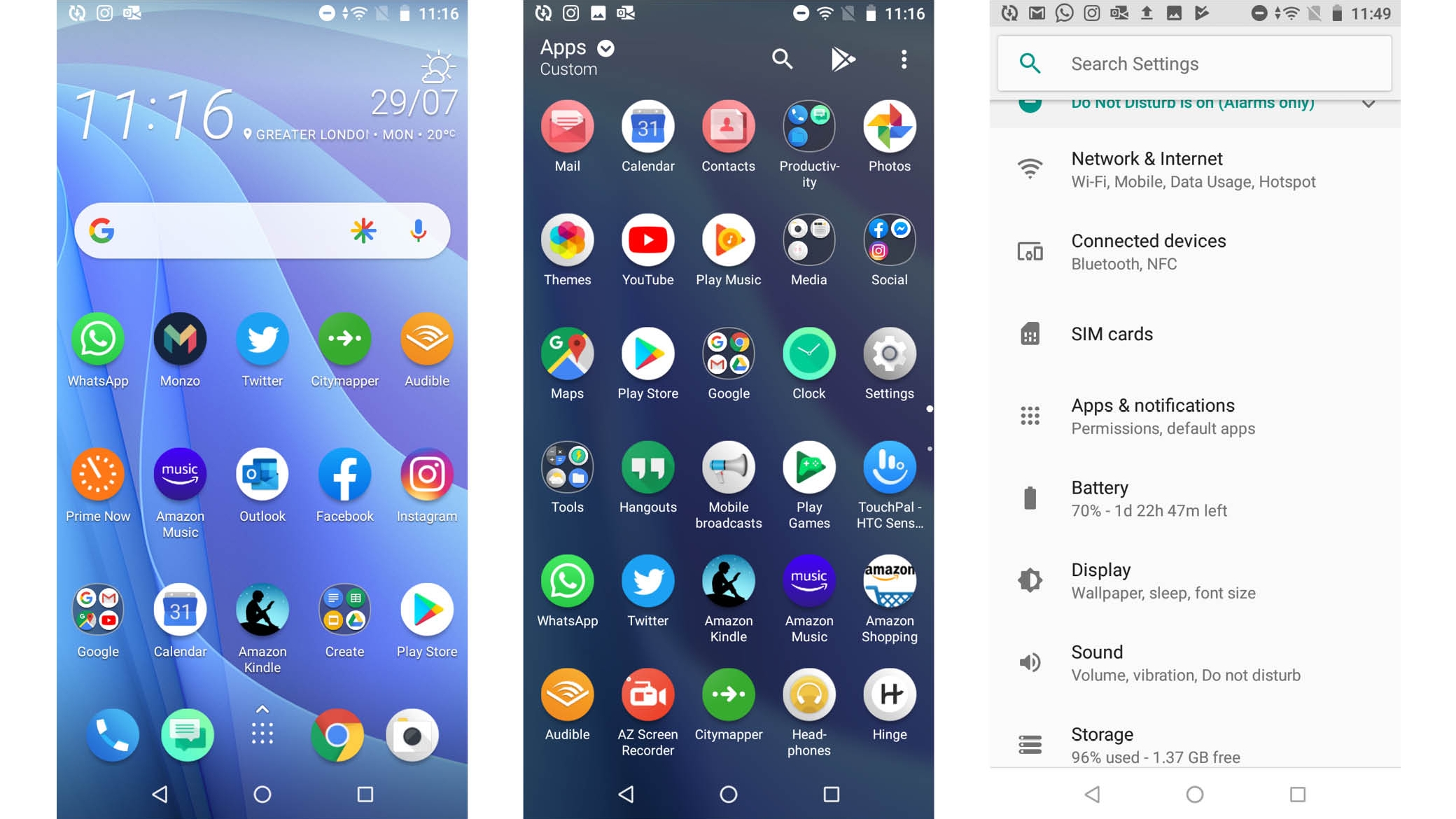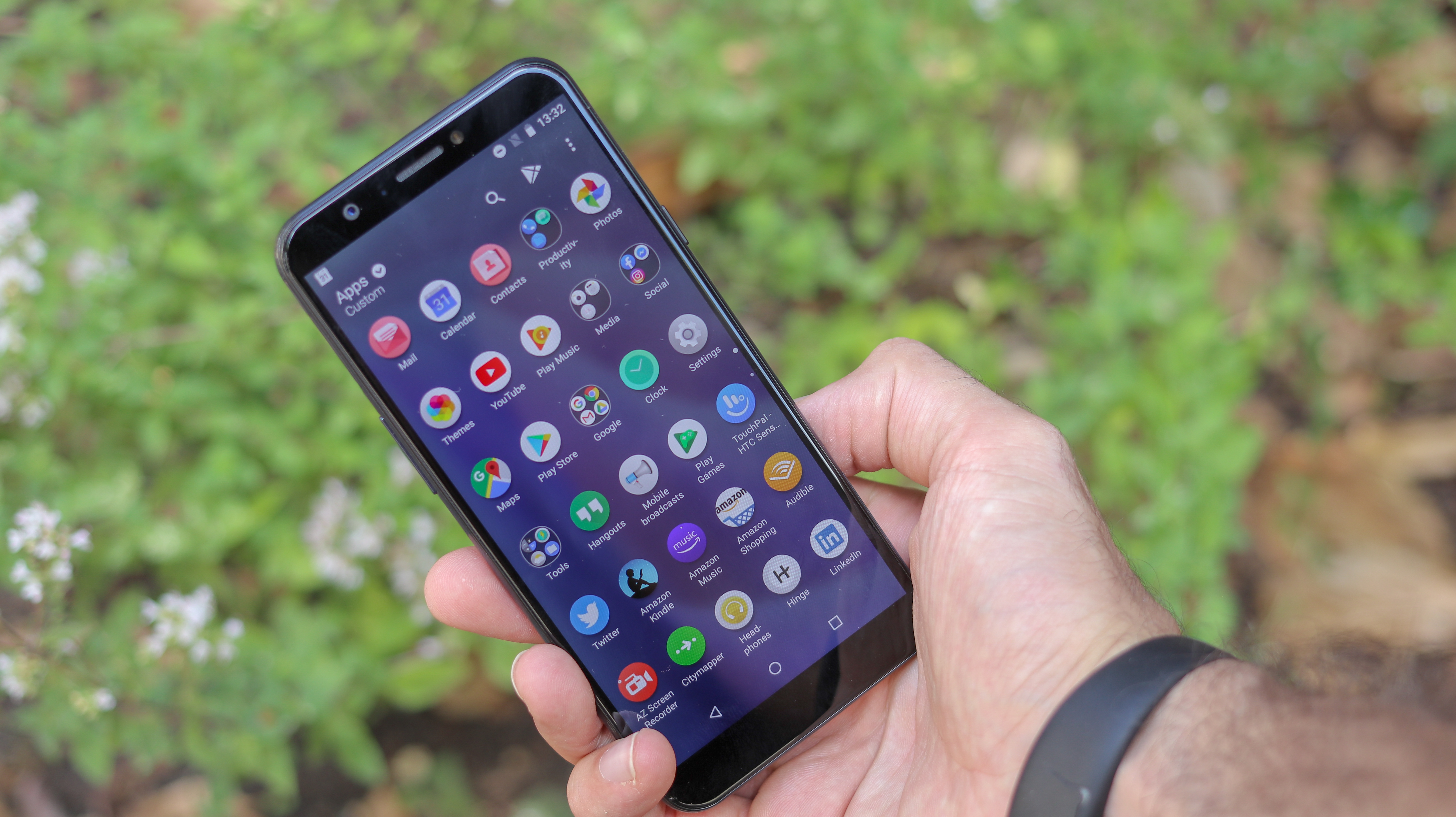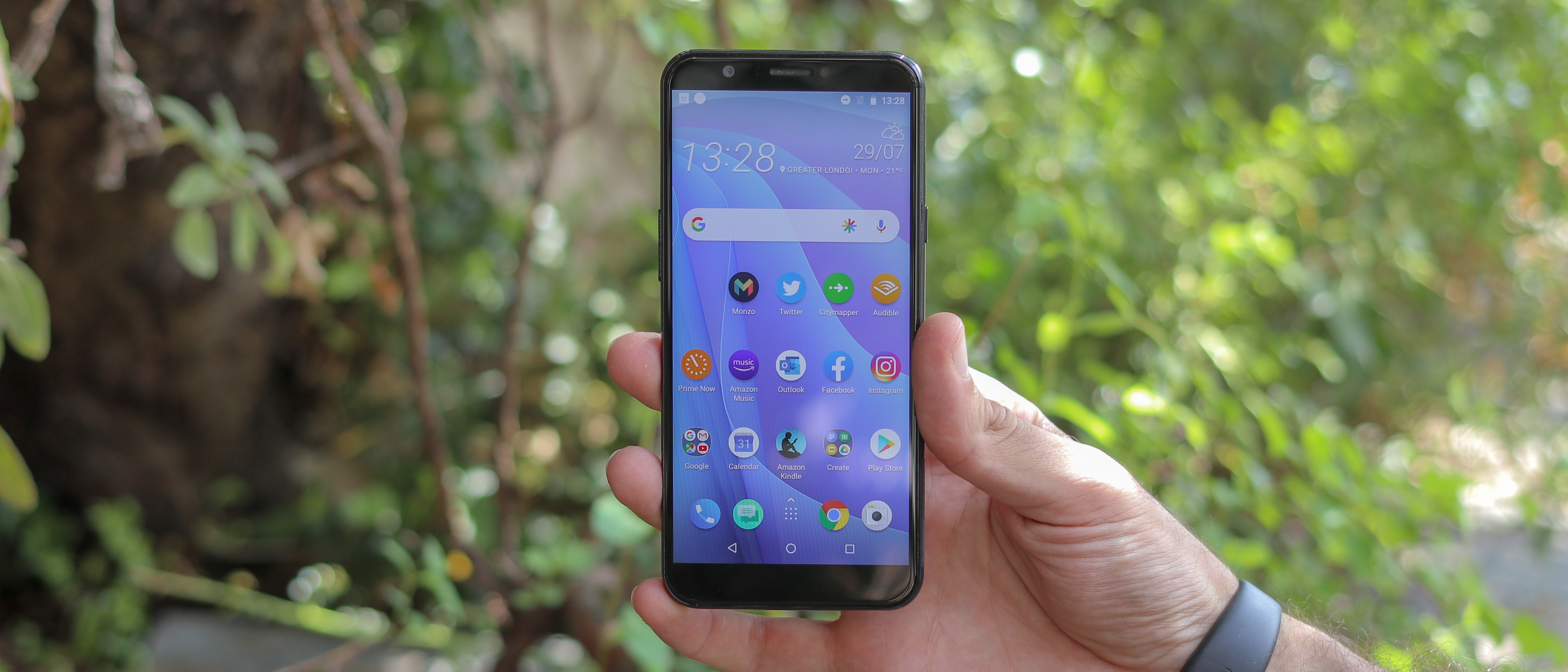Why you can trust TechRadar
Interface and reliability
- Runs Android 8
- Minimal bloat
- Noticeable slowdown
The HTC Desire 12s runs Android 8 with HTC's Sense UI over the top. Android 8 is a dated version of Google’s operating system, so it isn’t off to a great start from a future-proofing point of view. That said, the phone will still deliver excellent app support.
The core UI experience revolves around a home screen that can be populated by app shortcuts and widgets. There’s a 'BlinkFeed' screen to the left, which showcases news and social media updates, and there’s an app drawer too. Pull down from the top of the screen to access the Desire 12s’ notifications tray and quick toggles.
While HTC’s Sense UI doesn’t feel fresh, having not changed much in recent years, it’s simple to get to grips with and is streamlined - there’s virtually no bloatware pre-installed. Unfortunately, the experience is fundamentally under-powered, stuttering and slowing down when multi-tasking across apps.

So while we don’t have any major issue with HTC’s Sense UI, the experience isn’t where it needs to be on the Desire 12s, given what competition like the Realme 3 Pro and Redmi Note 7 offer.
Multimedia and specs
- 3D games are almost unplayable but basic games work well
- Basic specs and benchmark score
- Includes NFC
Given how under-powered the Desire 12s is, it isn’t a great phone when it comes to gaming. 3D titles border on unplayable, though basic 2D games are handled well.
On the plus side, the screen looks good, so video playback is a treat, and while the phone’s mono speaker is easy to cover up, the sound it produces is loud and you can use wired headphones thanks to the fact the phone has a headphone jack.

Benchmarks tell the same story we experienced in our time gaming on the phone, with it scoring a Geekbench multi-core score of 2,584.
Breaking down the specs inside the HTC Desire 12s, and there’s a Qualcomm Snapdragon 435 chipset powering everything along, paired with 32GB of storage and 3GB of RAM, or 64GB of storage and 4GB of RAM. We reviewed the starting capacity version with 3GB of RAM, which is the one you’ll likely find in stores in the UK.
There’s microSD card expansion support, as well as 4G, Bluetooth 4.2 and a fast, accurate fingerprint scanner around the back of the HTC Desire 12s, and the phone also features NFC, which is often missing from more affordable smartphones.
Current page: Anything else I should know?
Prev Page Battery life and camera Next Page Verdict and competitionBasil Kronfli is the Head of content at Make Honey and freelance technology journalist. He is an experienced writer and producer and is skilled in video production, and runs the technology YouTube channel TechEdit.

